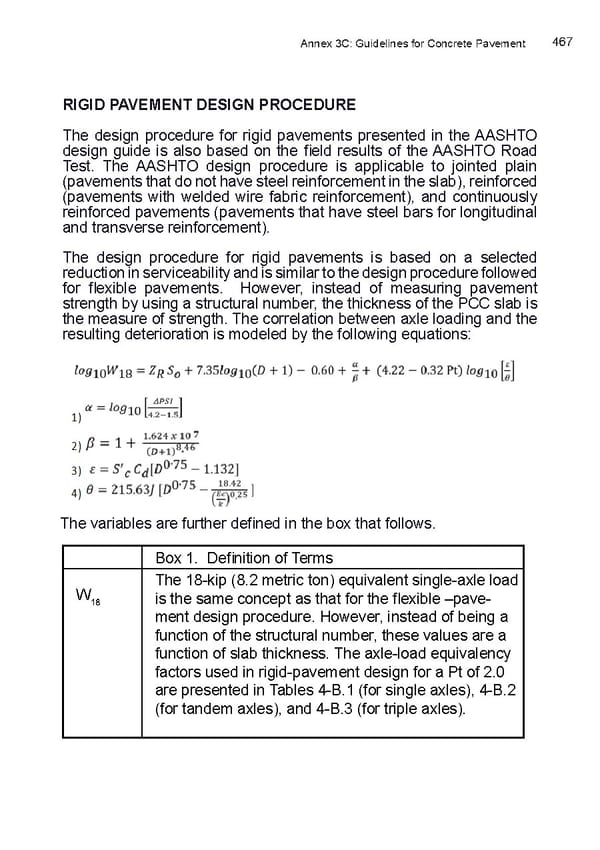Annex 3C: Guidelines for Concrete Pavement 467 RIGID PAVEMENT DESIGN PROCEDURE The design procedure for rigid pavements presented in the AASHTO design guide is also based on the field results of the AASHTO Road Test. The AASHTO design procedure is applicable to jointed plain (pavements that do not have steel reinforcement in the slab), reinforced (pavements with welded wire fabric reinforcement), and continuously reinforced pavements (pavements that have steel bars for longitudinal and transverse reinforcement). The design procedure for rigid pavements is based on a selected reduction in serviceability and is similar to the design procedure followed for flexible pavements. However, instead of measuring pavement strength by using a structural number, the thickness of the PCC slab is the measure of strength. The correlation between axle loading and the resulting deterioration is modeled by the following equations: The variables are further defined in the box that follows. Box 1. Definition of Terms W The 18-kip (8.2 metric ton) equivalent single-axle load 18 is the same concept as that for the flexible –pave- ment design procedure. However, instead of being a function of the structural number, these values are a function of slab thickness. The axle-load equivalency factors used in rigid-pavement design for a Pt of 2.0 are presented in Tables 4-B.1 (for single axles), 4-B.2 (for tandem axles), and 4-B.3 (for triple axles).
 Local Road Management Manual Page 467 Page 469
Local Road Management Manual Page 467 Page 469